 |
 |
 |
| |
Incidence Rates and Risk Factors Associated with Hepatocellular Carcinoma (HCC) in Patients with Advanced Liver Disease Due to Hepatitis C: Results of the HALTC Trial; Is the HALT-C Study Design Flawed???
|
| |
| |
Reported by Jules Levin
43rd EASL
April 23-27, 2008
Milan, Italy
A.S. Lok presented this data at EASL.
From Jules Levin: There are 2 criticisms of this study I have. One, in this presentation patients with cirrhosis had a much higher risk for HCC (see graph below) and patients in the "highest risk group" (see graph below) had much higher rates of HCC. The study DID NOT report if maintenance therapy would reduce HCC rates in these 2 patient groups-those with cirrhosis and those considered "high risk". Two, in the presentation on HALT-C by Mitch Shiffman on Sunday, the last EASL conference day, Shiffman reported patients on maintenance therapy (Pegays 90 mcg) who experienced a viral load reduction of 4 logs did see less liver complications, although not a reduction in fibrosis, although the differences were not statistically significant because the numbers of patients were too small in these groups. The HALT-C study however was not designed to examine if viral suppression was associated with reduced HCC and other complications including worsening of fibrosis. So perhaps patients with cirrhosis and perhaps patients who achieve a significant viral load reduction, of say 4 logs or perhaps 2 or 3 logs, would benefit from maintenance therapy. In addition, perhaps a higher dose of Pegasys of say 135 mcg or 180 mcg would have more success in reducing viral load. In sum, there remain unanswered questions that are dismissed by the mere statement by the authors that "maintenance therapy is ineffective in reducing the development of HCC in patients with advanced liver disease due to HCV".
BACKGROUND
HCV-related HCC occurs predominantly in patients with cirrhosis, occasional cases have been reported in patients with advanced fibrosis.
Interferon has been reported to decrease HCC development in patients with HCV-related cirrhosis in some studies.
Data regarding HCC imcidence rates and risk factors among patients with HCV-related cirrhosis in the USA are scant.
STUDY AIMS
To determine in the HALT-C Cohort
--the incidence of HCC
--the effect of maintenance interferon therapy on HCC development
--the risk factors associated with HCC development
To develop predictive models for HCC development among patients with advanced liver disease due to hepatitis C.
AUTHOR SUMMARY
Cumulative 5 yr incidence of HCC among the HALT-C cohort
-- in the interferon-treated patients and controls was similar: 5.4% vs 5.0% (p=0.78)
-- In patients with cirrhosis was higher than those with bridging fibrosis: 7.0% vs 4.1% (p=0.08)
19% (9/48) of patients with HCC did not show cirrhosis either on baseline or on follow-up biopsies or explant, indicating that the absence of cirrhosis in these patients was not likely to be due to sampling error.
HCC development was significantly associated with older age; lower BMI; platelets and albumn; higher AST, ALT, alkaline phosphate, AFP and DCP; and the presence of esophageal varices.
AUTHOR CONCLUSIONS
Maintenance therapy with low dose peginterferon is ineffective in reducing the development of HCC in patients with advanced liver disease due to HCV.
Modeling of risks can identify patients at highest risk of HCC.
Additional studies are required to confirm our finding of a high risk of HCC in patients with chronic hepatitis C and bridging fibrosis to determine if HCC surveillance is warranted in these patients.
INCLUSION / EXCLUSION CRITERIA
HCV RNA positive
Liver histology: bridging fibrosis (Ishak score 3-4) or cirrhosis (Ishak score 5-6)
Failure to achieve SVR after prior treatment with IFN +/- ribavirin
No evidence of hepatic decompensation
No evidence of HCC
--AFP <200 ng/mL for Lead-in and <1,000 ng/mL for Express patients
--No lesion on imaging suugestive of HCC

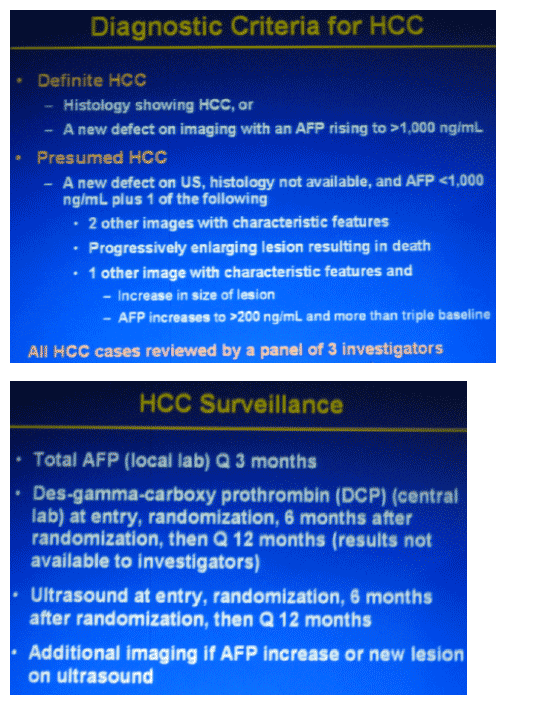

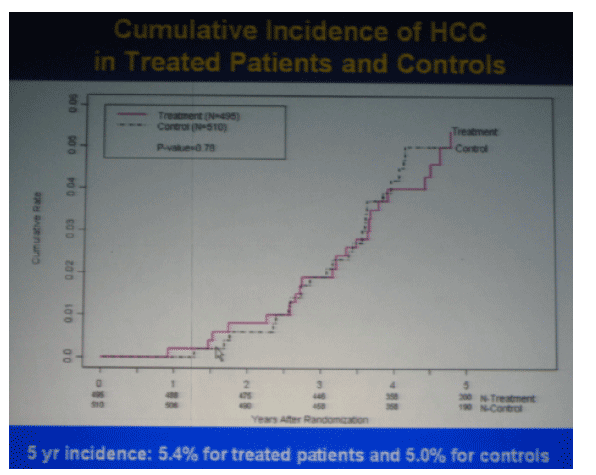
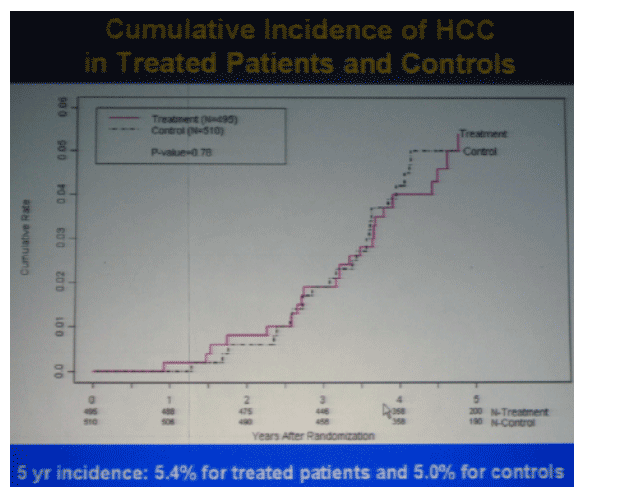
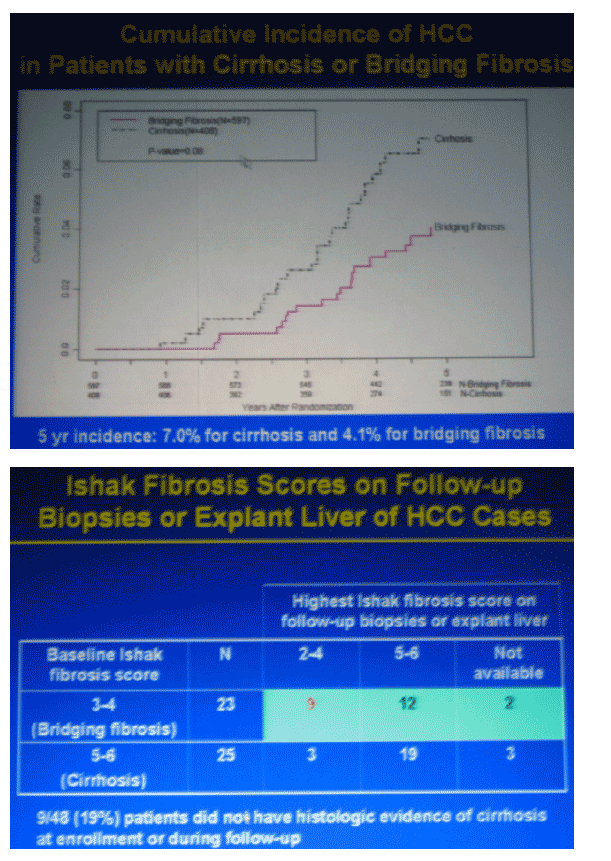
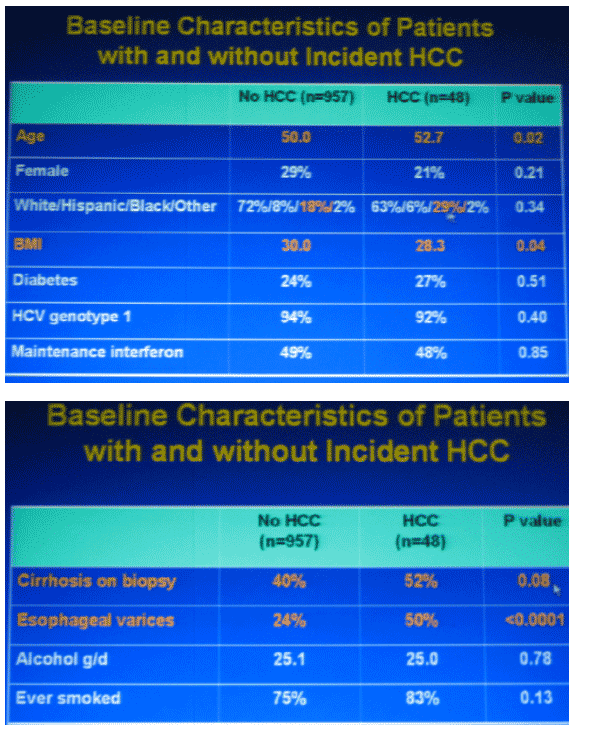
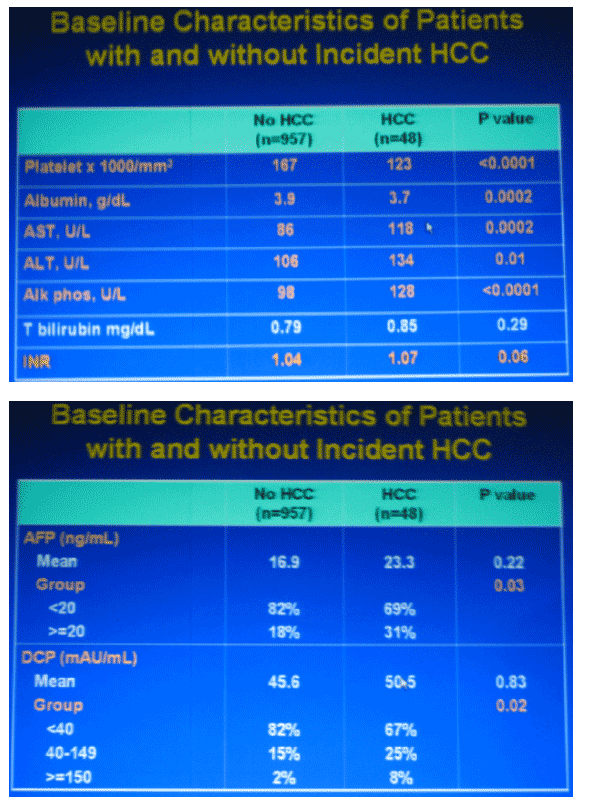
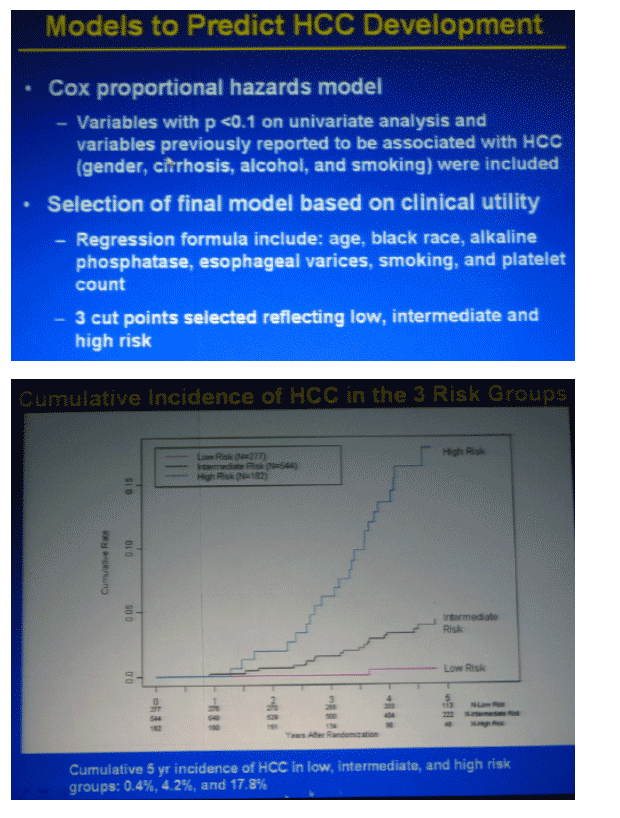
|
| |
|
 |
 |
|
|